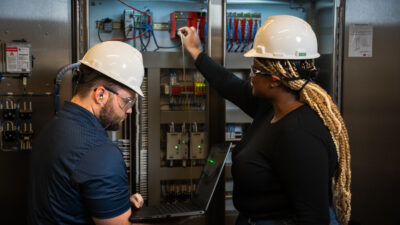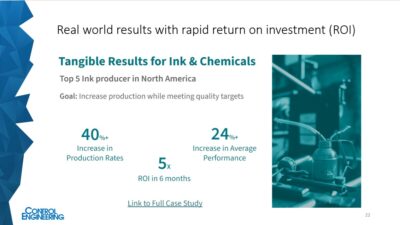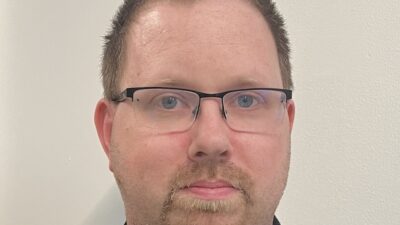Automation system integrators explain how to prioritize automation upgrades, digital transformation and control system integration projects.

Learning Objectives
- Review how an edited transcript from a popular Control Engineering webcast provides automation system integration advice about automation project prioritization.
- Understand how a project workshop helps with digital transformation, automation, system integration projects with automation project discovery, collaboration and justification.
- Explore who should be involved in preparing for an automation project, current automation, long-term system integration goals, how to plan a plant audit and an automation project report, goal changes and process updates.
Control system integration insights
-
An edited transcript from a popular Control Engineering webcast provides automation system integration advice on planning and prioritization of automation upgrades.
-
A project workshop helps with digital transformation, automation, system integration projects with automation project discovery, collaboration and justification.
-
Prepare for an automation project by understanding current automation, long-term system integration goals, elements of a plant audit and an automation project report, planning, goal changes and process updates.
Control system integrators explain how to prioritize automation and control system upgrades for the best results based on application needs. The advice, part 2 in an article series, was adapted from a transcript of popular Control Engineering webcast, “Automation Series: How next-generation automation will help in 2023,” with help from OpenAI’s ChapGPT, then was reviewed and further edited by webcast moderator, Mark T. Hoske.
Webcast instructors were:
-
Tyler Graham, director business development-digital transformation, and Randy Rausch, director of technology-digital transformation, Eosys
-
Mike Howard, vice president of system integration at George T. Hall
-
Matt Lueger, executive vice president, NorthWind Technical Services.
A question asked of the system integrators during the webcast was: How do you help customers prioritize automation and control system integration projects based on their needs?

Digital transformation workshop helps with automation, system integration projects
Graham: We have a workshop process to help customers with system integration project prioritization. The first question is really what problem or problems are you trying to solve? We see a lot of customers that latch onto a technology, perhaps something that they saw at a trade show or read about online and then jump in feet first, because it’s exciting and new. This can lead to some success, but it often results in many different point solutions and silos of data across the manufacturing floor. It also can lead multiple tools attempting to solve the same problem. Worst case, something can fail or lose support from stakeholders.
Instead, we recommend defining the problem first using a methodical process, with all stakeholders across the value stream, to develop a roadmap to success, using a phased approach. We refer to as a digital transformation workshop. It doesn’t have to apply only to digital transformation, but that’s kind of the focus here. It can be any kind of project that includes, a change in culture, especially those involving many areas of the business, like planning, operations, quality maintenance and others, or especially if the project requires a bridging of that IT/OT boundary.
Automation project discovery, collaboration, justification
Workshops are typically two to three days and are broken into three main phases, discovery, collaboration and justification.
-
Day One, discovery about goals, needs for automation: The first day focuses on discovery. This is where we learn about the process. We walk the floor. We assess existing infrastructure at all levels, network controls, etc. We look at digital systems, how data’s being collected today, if it’s manual and if there’s automation involved. We interview stakeholders, everyone from leaders to end-users.
-
Day Two, collaboration about automation projects: Once we’ve established the problem or problems to solve through that discovery process, we move into a collaborative phase, where we discuss the art of the possible. We do this through demos, through brainstorming sessions and looking at past solutions that have already been proven to solve these problems. We really want to evaluate needs versus wants. It’s easy to get excited about doing a lot of things in this space. We balance short-term and long-term goals and look at the prerequisites to help define that phase approach. Then we build that multi-phase roadmap.
-
Day three, automation justification: The third day is a justification. This further refines what we do in the second day and defines what success will look like in way that’s clearly understood and communicated. We ensure that that success results in value for the business. Lastly, we debrief executive management on the results of the workshop to ensure they weigh in on the next steps.
Overarching workshop expectations include making sure prework is done ahead of time so we can hit the ground running and be face-to-face for the full time. We prefer in-person workshops if at all possible. We at least want to be on-site during the discovery day. Participation is paramount. There are no wrong questions or points of view. We want everybody to be on the same team and rowing in one direction. A big issue is to anticipate changes. These projects are going to involve change, whether it’s all throughout the business or at least at certain levels. Preparing for changes is important.
Who should be involved in preparing for an automation project?
Who should be involved in the digital transformation or automation project workshop? There’s really no right answer on the number of people to include. We’ve found the best recipe is to have a core team of stakeholders that really know the business inside and out. They can dedicate the necessary time for the workshop, and, ultimately, they’re the ones that are going to own and drive the resulting projects as well as that associated change management. Then we want to establish an extended team that includes any other remaining key people within the business.
We like to see representatives from operations, maintenance, controls, engineering planning and IT, to include them early. If a customer has a designated continuous improvement leader, it’s even better. It’s not always clear who in the business is going to have interest or skin in the game in these types of projects. Titles and responsibilities vary. By including a multidisciplinary team, customers often find value in unexpected areas and that can lead to further buy-in and leverage for moving the project forward. By engaging at different levels in the workshop, even down to operators, a sense of ownership is established early. A sense of ownership among stakeholders goes a long way to ensuring automation project implementation success.
It’s really about keeping a balance. Getting too many people involved can certainly stifle progress in the workshop, but a lack of key representation is definitely going to be a problem too, because you’re going to have lost information or failure to get buy-in.
Understanding current automation and long-term system integration goals
Howard: For system integrators to start the project prioritization process, we really need to understand what the clients have in place and try to determine their long-term goals for the process of the system. Move through the design phase with transparent communication is key to success.
Discovering the customer’s needs with feedback from all the stakeholders in a facility or at a plant is often the biggest challenge. You really need that champion who’s going to help drive the project and bring in team members to make it successful with the system integrator. We work through the process of discovery, of scope development, development of an estimate based on years of collected historical data. Then we look at the build, whether it’s software, hardware, the testing and validation process, and then look at the closeout process, which includes training and documentation for the automation system integration project.
Our goal is to develop a written scope of work that captures the best possible outcome for clients. It boils down to: What does a successful project look like for you and how do you measure that as being a success? And if you can get that, it’s a better path and clarifies the direction required. There’s always going to be some surprises along the way, and we try to mitigate those as much as possible by thoroughly evaluating the existing operations versus that successful project outcome.
The automation or control system integration project becomes a written document that everybody agrees upon. Continuing to communicate and including a continuous process of feedback during the project continues to keep the successful project outcome goal in mind.

Planning, plant audit is key for automation and control system project prioritization
Lueger: From a project prioritization standpoint, planning is essential. In working with customers, we have found the most successful way they progress through digital transformation is by committing to a long-term planning process. It’s less effective to say, “Okay how do we do this one project?” Or, “How do we do these two projects on our budget for this year?” It’s better to look at their business and where they see it going two or three years out and commit to planning toward that.
We find that a plant audit and review of what they have already is the best way to start including questions such as:
-
Is it manual?
-
Is it already integrated?
-
Do they have islands of automation out there?
-
Do they have a strong network infrastructure?
Automation project report, planning, goal changes, process updates
Based on those answers, we typically create a report, sit down with them and review in a planning meeting to look at critical component risks and pain points in discussions with the operations team. We aim to understand the goals they have in mind.
Examples can include optimizing uptime or increasing production without additional people or improving quality in a certain place. Recently we had someone say: “We need this to be a more desirable place to work.” They wanted apps to help the younger generation be more willing to dive in and work on the plant floor.
After that discussion and planning process, we go through a suggested project plan for a single project, a single year or a multi-year approach. A good way to close a loop and get buy-in from the customer are to identify goals, attainability of goals and how those goals meet with goals for the rest of the business beyond automation.
Spoiler alert: Goals can change sometimes. The important part of that is that we repeat that process either at the end of the first project or the first phase or annually or quarterly, depending on what their path is for the business and how automation and control system upgrades, digitalization or other system integration projects can help.
Mark T. Hoske is content manager, Control Engineering, CFE Media and Technology, [email protected].
CONSIDER THIS
How can system integration experts help your next automation project?
ONLINE
See part 1 in this article series: Control system integrators: How to excel with automation upgrades
View the webcast until Jan. 18, 2024
Webcast instructors answer more audience questions about next generation automation in this article.




